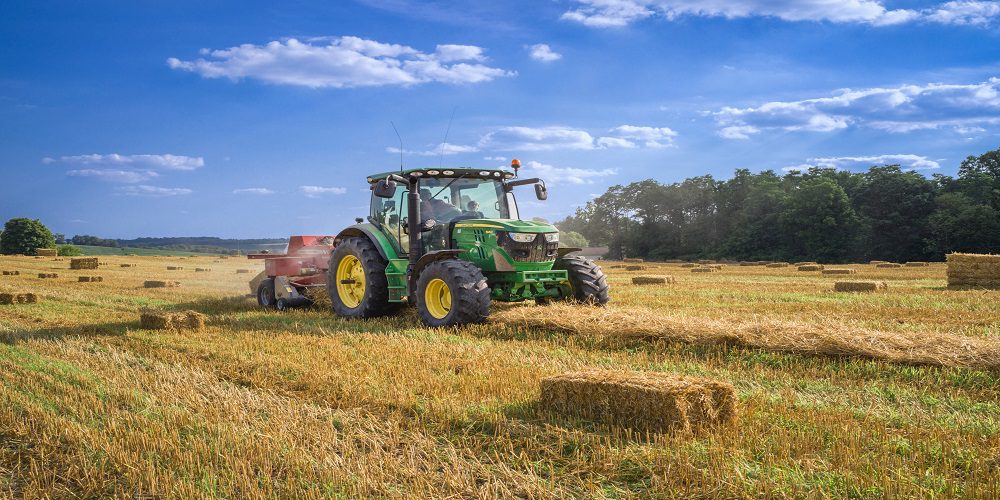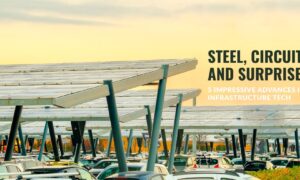Introduction
In the ever-evolving landscape of agriculture, technology continues to play a pivotal role in enhancing productivity and efficiency. One such groundbreaking innovation that has transformed the way we approach farming is automated machinery. This article delves into the realm of automated machinery as a powerful component of agricultural technology, exploring its benefits, applications, and the impact it has on modern farming practices.
The Basics of Automated Machinery in Agriculture
A. Definition and Scope
Automated machinery in agriculture refers to the use of advanced technologies to perform tasks traditionally carried out by humans or basic machinery. These technologies include robotics, artificial intelligence (AI), sensors, and data analytics, collectively working to streamline farming processes.
B. Components of Automated Machinery
Robotics and Automation Systems
a. Precision Farming: Utilizing GPS technology for accurate field mapping and crop monitoring.
b. Harvesting Robots: automated machines capable of efficiently harvesting crops, reducing labor-intensive processes.
Artificial Intelligence (AI)
a. Machine learning: algorithms that enable machines to learn and adapt, improving decision-making in various farming tasks.
b. Predictive Analytics: AI-driven insights that assist farmers in making informed decisions based on data analysis.
Sensors and IoT devices
a. Soil sensors: monitoring soil health and providing real-time data for optimized irrigation and fertilization.
b. Drones: aerial devices equipped with sensors for crop monitoring, disease detection, and precision agriculture.
Applications of Automated Machinery in Agriculture
A. Precision Agriculture
Efficient resource management
a. Precision Planting: Optimizing seed placement for maximum yield.
b. Variable Rate Technology: Adjusting inputs like water and fertilizer based on specific crop and soil requirements.
Crop Monitoring
a. Remote Sensing: Utilizing satellite imagery and drones for monitoring crop health and identifying potential issues.
b. Sensor Networks: Deploying ground-level sensors for real-time data on temperature, moisture, and nutrient levels.
B. Harvesting Automation
Automated Harvesters
a. Robotic Fruit Pickers: Increasing efficiency and reducing labor costs in fruit harvesting.
b. Combine Harvesters: advanced machines capable of harvesting, threshing, and cleaning crops in a single pass.
Sorting and packing automation
a. Automated Sorting Systems: Sorting harvested produce based on size, ripeness, and quality.
b. Packaging robots: streamlining the packing process for enhanced efficiency and reduced waste.
C. Livestock Management
Automated Milking Systems
a. Robotic Milkers: Enhancing efficiency and ensuring consistent milking schedules for dairy farms.
IoT-based animal health monitoring
a. Wearable Sensors: Monitoring the health and behavior of livestock for early disease detection.
Advantages of Automated Machinery in Agriculture
A. Increased Productivity
Speed and efficiency
a. Accelerated Harvesting: Automated machinery can perform tasks at a faster pace than traditional methods.
b. Continuous Operation: Machines can operate 24/7, optimizing the use of daylight hours and reducing downtime.
Precision and accuracy
a. Targeted Application: Precision agriculture techniques ensure that resources like water and fertilizer are applied precisely where needed.
b. Consistent Quality: Automation reduces the variability associated with manual labor, resulting in more consistent crop quality.
B. Resource Optimization
Reduced labor dependency
a. Addressing Labor Shortages: Automated machinery can help overcome challenges related to labor shortages in agriculture.
b. Labor Cost Reduction: Automation minimizes the need for a large workforce, reducing labor-related expenses.
Sustainable farming practices
a. Reduced Environmental Impact: Precision agriculture minimizes the use of resources, leading to a more sustainable and eco-friendly farming approach.
b. Conservation of Resources: Automated machinery ensures that resources like water and fertilizers are used judiciously, promoting environmental stewardship.
C. Data-Driven Decision Making
Improved Insights
a. Data Analytics: Automated machinery generates vast amounts of data, providing farmers with valuable insights into crop performance, soil health, and resource utilization.
b. Informed Decision-Making: Data-driven insights empower farmers to make informed decisions, enhancing overall farm management.
Challenges and Considerations
A. Initial Investment Costs
High capital expenditure
a. Technology Adoption: The initial investment in automated machinery can be substantial, posing a challenge for small-scale farmers.
Training and skill acquisition
a. Technological Proficiency: Farmers need to acquire the skills and knowledge necessary to operate and maintain automated machinery effectively.
B. Integration and Compatibility
Interoperability Issues
a. Integration Challenges: Ensuring that different automated systems and technologies work seamlessly together can be a complex task.
b. Compatibility with Existing Equipment: Upgrading existing machinery to accommodate automation may present compatibility issues.
C. Data Security and Privacy
Cybersecurity Concerns
a. Data Vulnerability: The collection and use of vast amounts of data in automated agriculture raises concerns about data security and privacy.
b. Mitigating Risks: Implementing robust cybersecurity measures is crucial to safeguarding sensitive agricultural data.
Future of Automated Machinery in Agriculture
A. Continued Technological Advancements
Innovations in robotics
a. Swarming Technology: coordinated efforts of multiple robots working together for increased efficiency.
b. Soft Robotics: Developments in flexible and adaptable robotic systems for delicate tasks.
Advancements in AI and machine learning
a. Autonomous Decision-Making: Machines with enhanced decision-making capabilities based on continuous learning.
b. Predictive Models: Improved forecasting of crop yields, disease outbreaks, and weather patterns.
B. Sustainable Agriculture Practices
Integration of green technologies
a. Renewable Energy: Adoption of solar-powered and energy-efficient technologies for sustainability.
b. Circular Agriculture: Implementing practices that reduce waste and promote the recycling of resources.
Climate-Resilient Agriculture
a. Adaptive Technologies: Developing technologies that can withstand and adapt to changing climate conditions.
b. Drought and Pest Resistance: Implementing measures to mitigate the impact of climate-related challenges on crop production.
Conclusion
Automated machinery stands as a transformative force in modern agriculture, offering solutions to the challenges faced by the industry. From precision agriculture and automated harvesting to data-driven decision-making, the benefits of automation are substantial. While challenges exist, ongoing technological advancements and a commitment to sustainable practices position automated machinery as a cornerstone for the future of agriculture. As farmers embrace these innovations, their potential to meet the demands of a growing population while promoting environmental stewardship becomes an achievable reality. The journey towards a more efficient, productive, and sustainable agricultural future is guided by the relentless pursuit of technological



































